It’s highly likely that a trip to London might include St Paul’s Cathedral. The ambience, the site and the building, designed by Sir Christopher Wren, always impresses. This part of London is one of the oldest areas of the city. The cathedral of today was completed in 1710. The original building was built in 604 AD. If you want to visit London past, this is the area to be in. My focus for the moment is Paternoster Square, which is behind St Paul’s. It was created in the 1960’s and 1970’s. The earlier buildings were destroyed in World War 2.
A tranquil spot
Paternoster Square is well worth a look if you’re venturing into the City of London. In this borough history and modernity sit alongside each other. The square is also the heart of the city’s financial district, housing the London Stock Exchange and it’s not far from the Bank of England.
In the past Paternoster Square would have been a spot for merchants and peddlers selling religious items to pilgrims. St Paul’s still looks down on it and today it’s surrounded by modern office blocks. Yet, the charm of the area remains.
There are many pavement cafes on the square. In the summer, weather permitting, you might find deck chairs facing a large outdoor screen beaming images of Wimbledon into the city. It’s a place to while away time over a drink and breathe in the atmosphere. You may imagine the ghosts of Charlotte Bronte and Oliver Goldsmith, just two of the famous authors that used to frequent the coffee shops of the area.
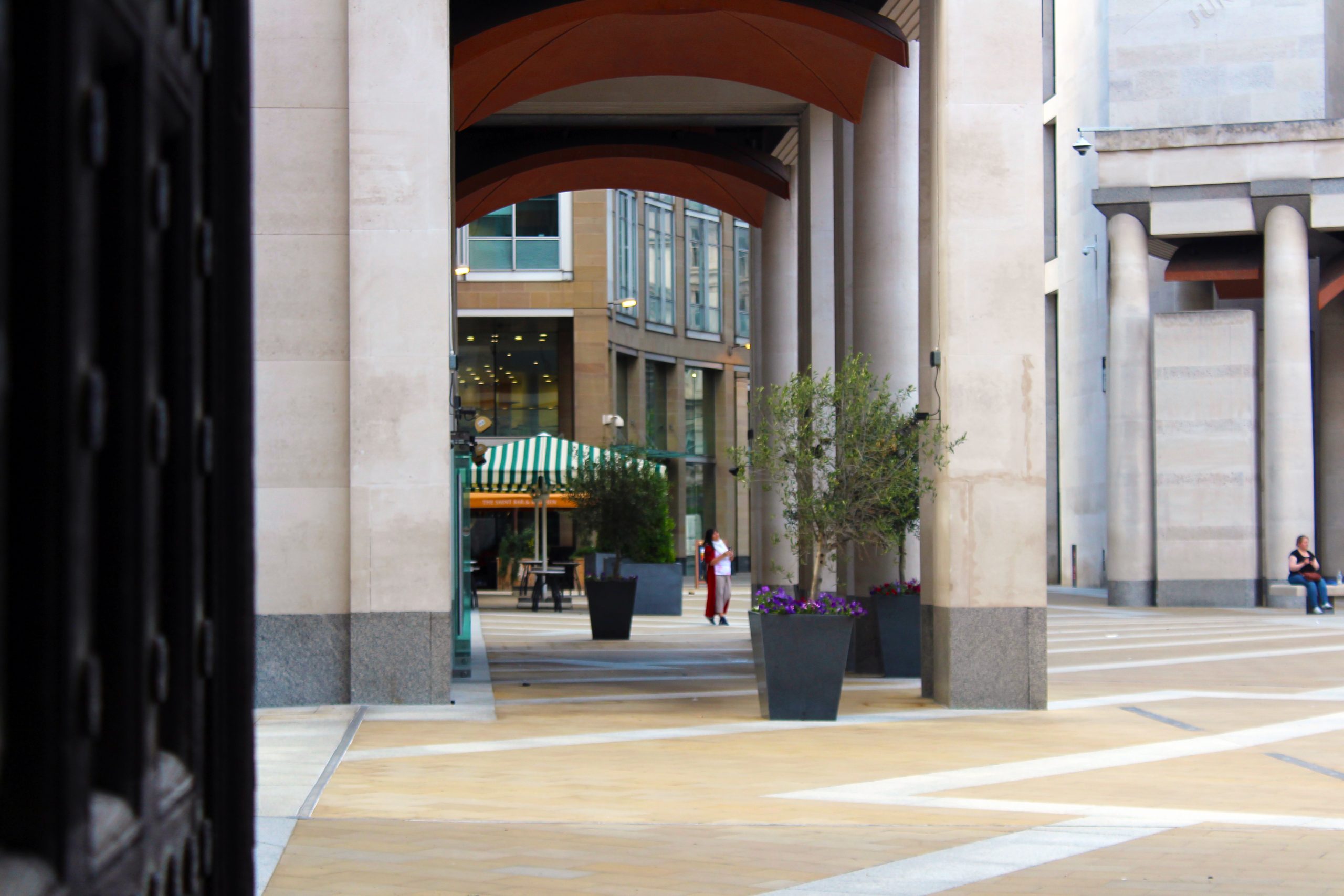
It’s said that the name of the square goes back to medieval times and a street called Paternoster Row. This was where the clergy of St Paul’s walked with their rosary beads. They would recite the ‘Paternoster’, or the Lord’s Prayer.
Making today’s history
Today’s square is built from a mix of Portland Stone, granite and sandstone. The warm coloured stone glows on sunny days. Five angel heads, sculpted by acclaimed stone sculptor, Emily Young, look down enigmatically from towering columns.
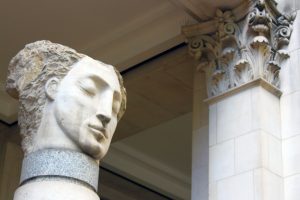
Their almost expressionless faces seem to speak volumes as they gaze across the square. Young has an impeccable background. Her grandmother was a sculptor and also a colleague of Auguste Rodin.
Something you might not expect in the middle of a city is the outdoor bronze sculpture by Elisabeth Frink, Shepherd with his Flock. Made in 1975, a shepherd is herding five sheep. He’s set on a Portland stone plinth and looks very purposeful in his stride. It’s said there was a livestock market here in past times, which could have be the inspiration behind the subject.
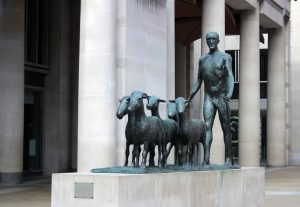
If you’re drawn to modern art you may also want to venture around the corner to the other side of St Paul’s and look at an abstract sculpture by Paul Mount, which was inspired by music and architecture.
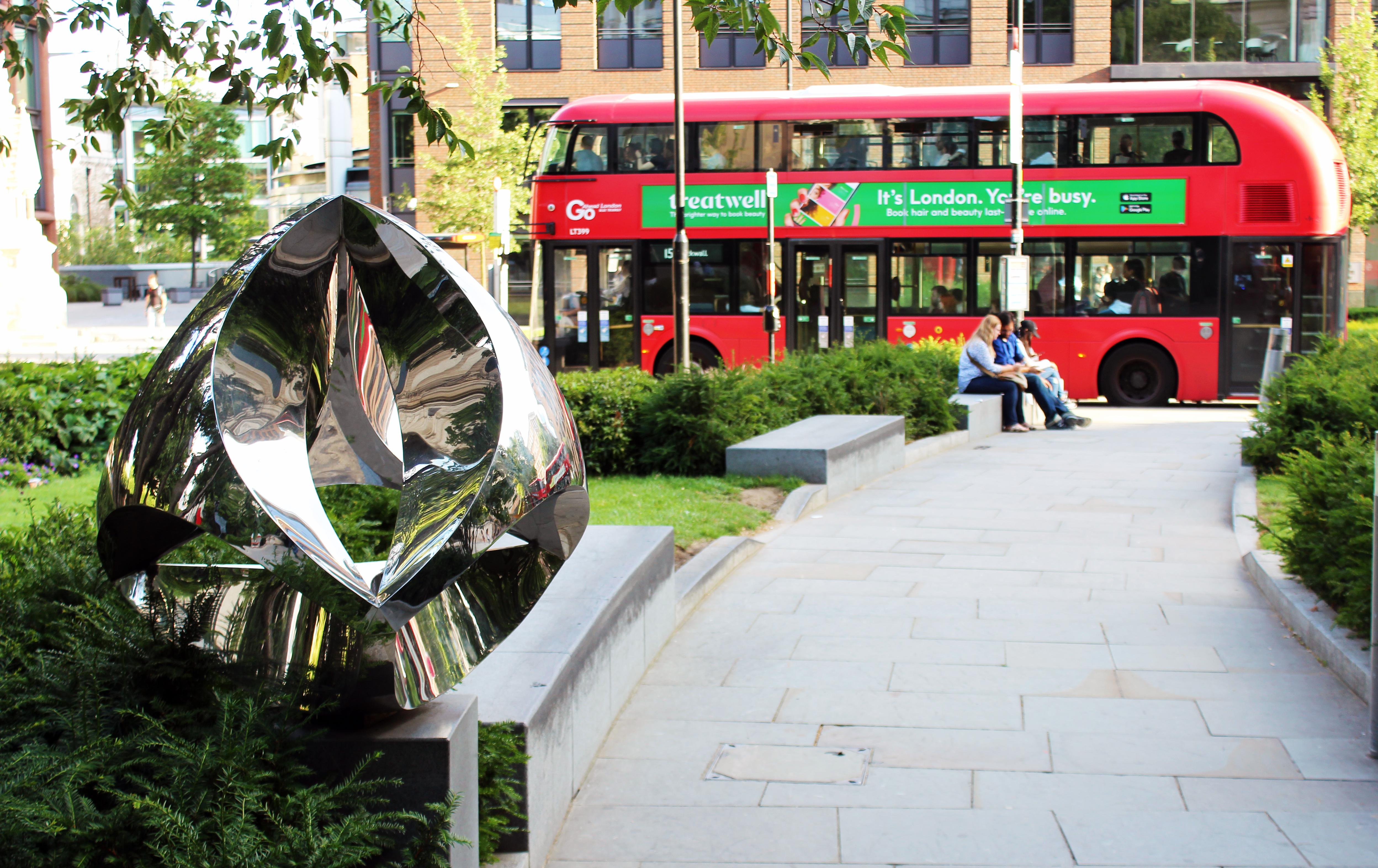
It glitters in sunlight and the rays cast lovely, undulating shapes on its mirrored surface.
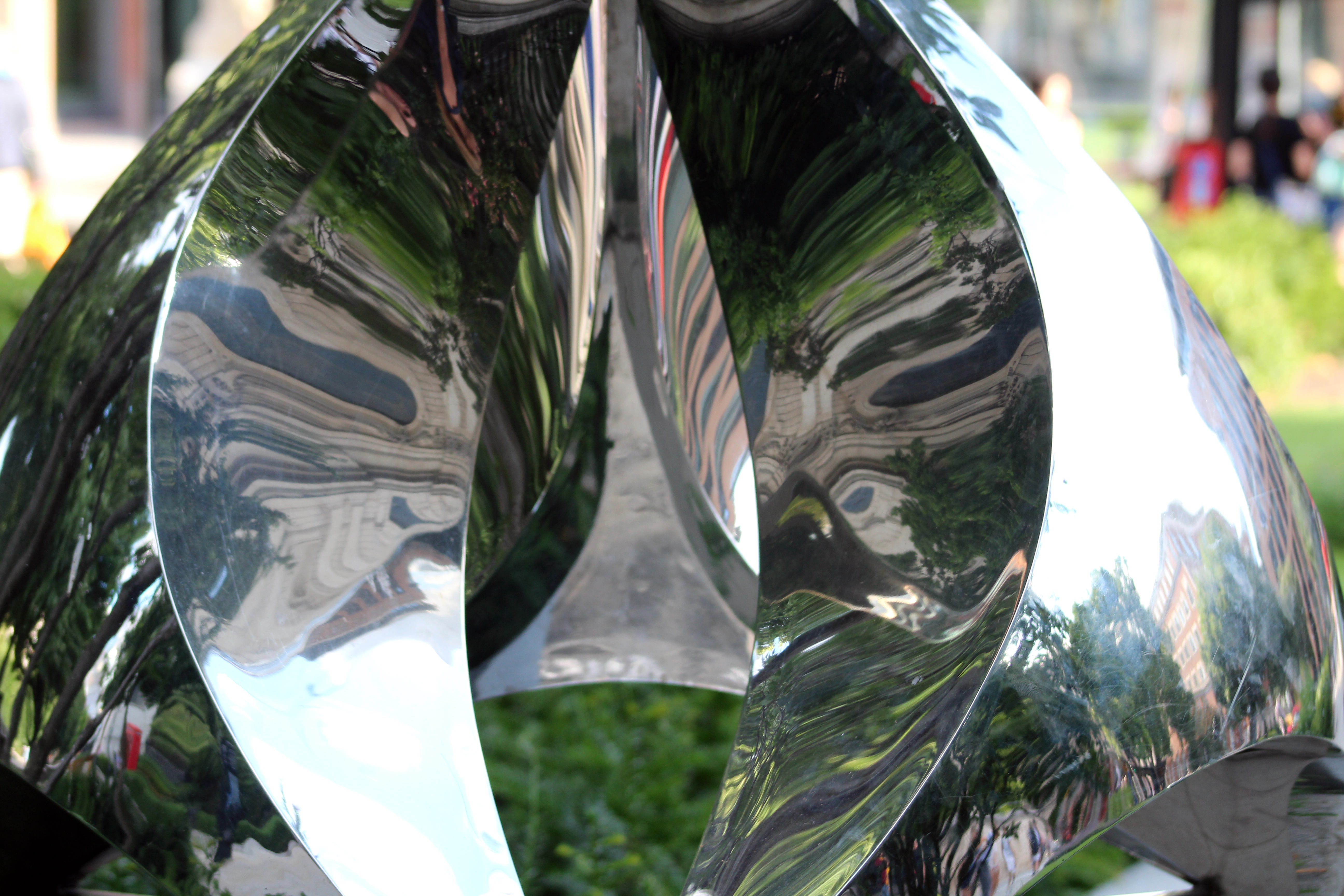
Paternoster Square is the ideal spot for a short break while visiting the City of London. It’s a good starting point to visit St Paul’s Cathedral. And don’t forget to explore the tiny network of back alleyways that will transport you to times past.
Getting there
Paternoster Square is at London, EC4M 7BP.
The closest tube station is St Paul’s on the Central line. If it’s more convenient to get the Circle or District line, then Mansion House is a five minute walk away. You could walk across the River Thames via the Millennium Bridge (opposite Tate Modern) if you get off the Circle or District line at Blackfriars tube.
There are several buses that stop at St Paul’s coming from all parts of town.
For more information on the square, shops, cafes and events visit the website.
Visit St Paul’s website for more information on visiting the cathedral.